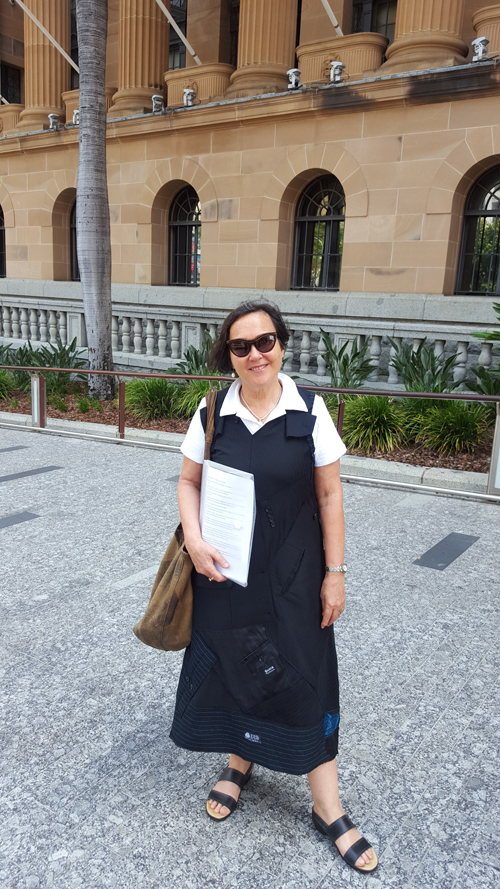 Jane Milburn spoke on a matter of public importance at the November 24 meeting of Brisbane City Council: (download Minutes or read speech and response_24_nov_2015)
Jane Milburn spoke on a matter of public importance at the November 24 meeting of Brisbane City Council: (download Minutes or read speech and response_24_nov_2015)
“In the same way we’ve become aware of our food – we are becoming more conscious of our clothing.
Today you are either wearing natural-fibres – or synthetic fibres derived from petroleum. I’m wearing a shift created with rescued wool suits that were one step away from becoming landfill. As a natural-fibre champion with a background in issues-based communication, I am seeking to help create a more sustainable clothing culture.
Thank you for this opportunity to raise the matter at this Brisbane City Council meeting.The past decade has seen a transformational shift in where and how our clothing is made – which raises ethical issues such as:
- Consumption increase – in two decades, individual annual fibre use across the globe has doubled from 7 to 13 kg each
- Fibre change – a decade ago, half of new clothes were natural fibres and half synthetics. Now 2/3 of new clothing are synthetic – and research shows they shed microplastic particles with every wash.
- Waste mountain – charities do a great job with the mass of cast-off clothing, yet only about 20% of donations find a new owner locally – the rest is ragged, dumped or sent overseas. Every year Australia exports 70 million kg of used clothes – they’re sold for $1/kg.
- Modern-day slavery – clothing is so cheap because garment workers in developing nations are being exploited. Rana Plaza showed us that and it sparked a Fashion Revolution of which I’m part.
- Loss of knowledge – we treat clothes as disposable. There is little understanding of the skill and time in making – and an inability to sew on a button or mend a hem.
Global awareness of clothing waste is rising and responses are emerging. The United Kingdom has a Sustainable Clothing Action Plan – run by resource efficiency group WRAP which works with industry and consumers. They have Love your Clothes – a campaign to help consumers buy, use and pass on clothing to reduce textile waste in landfill.
This is extending into Europe with the European Clothing Action Plan – a 3.6 million euro pilot project which aims to ensure less clothing goes to waste and encourages consumer to buy less and use it for longer.
In the United States there’s a textile collection system in New York apartments (called Wearable Collections – because clothing is not garbage) and San Francisco has a Zero Textile Waste Strategy.
It would be great to bring this new consciousness to Brisbane and Australia! We recycle paper, glass, metal, plastic … why not be more proactive with textiles? We need leadership to create a more sustainable clothing culture.
I am just one person creating change through actions – I launched Textile Beat at a Green Heart Fair in 2013. At talks and workshops I share a Slow Fashion manifesto – 10 small ways to reduce your clothing footprint. I hope this is the start of a broader conversation about sustainable clothing that can build on Brisbane’s great sustainability ethos.”